How to Choose Cohesive Bathroom Plumbing Fixtures
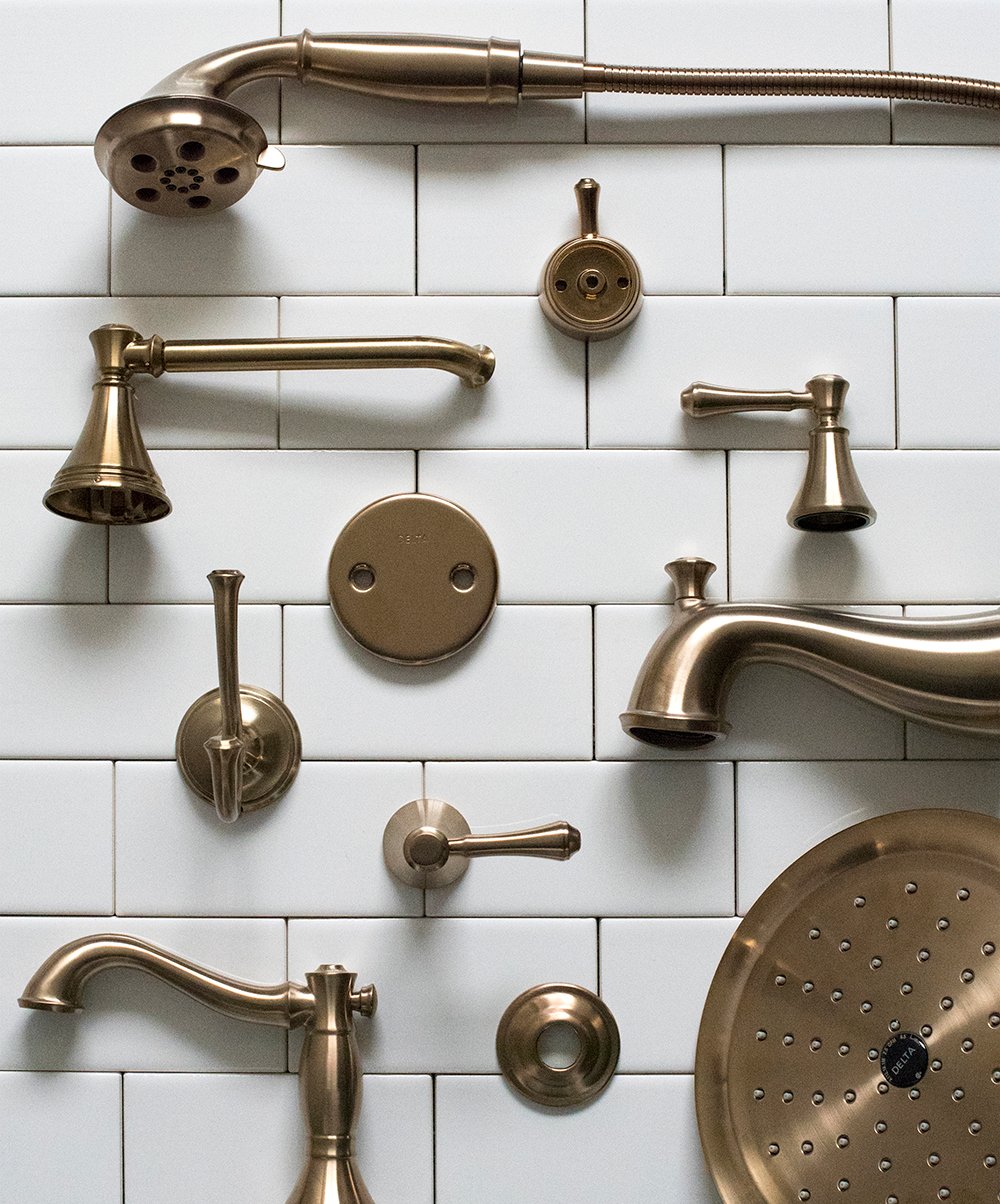 This is a question I get regularly… how do I choose the right plumbing fixtures, that work well together? With each bathroom renovation comes A LOT of decisions. I was just chatting with my mom (who is also renovating a bath) on the phone yesterday, and she said, “I am SO stressed making all of these decisions- I don’t know how you do it, Sarah”. It’s honestly much easier than you’d expect. When you’re investing a lot of money into a project that you’ll have to live with and look at for years to come, you want to feel educated and confident in your selections. If you’re not to that point yet, don’t worry! I’m here to help. Even if you’re not renovating right this minute, you’ll want to pin this post for later! I’m sharing a Q&A with what to do and what not to do, a printable checklist, and my own 7-step process. Click through for tons of info and a foolproof plan on how to choose cohesive bathroom plumbing fixtures.
This is a question I get regularly… how do I choose the right plumbing fixtures, that work well together? With each bathroom renovation comes A LOT of decisions. I was just chatting with my mom (who is also renovating a bath) on the phone yesterday, and she said, “I am SO stressed making all of these decisions- I don’t know how you do it, Sarah”. It’s honestly much easier than you’d expect. When you’re investing a lot of money into a project that you’ll have to live with and look at for years to come, you want to feel educated and confident in your selections. If you’re not to that point yet, don’t worry! I’m here to help. Even if you’re not renovating right this minute, you’ll want to pin this post for later! I’m sharing a Q&A with what to do and what not to do, a printable checklist, and my own 7-step process. Click through for tons of info and a foolproof plan on how to choose cohesive bathroom plumbing fixtures.
*This post is sponsored by Lowe’s. All content, ideas, and words are my own. Thank you for supporting the brands that allow us to create unique content while featuring products we actually use & enjoy!
With so many plumbing fixture options on the market, it’s easy to get overwhelmed. Now that all of the plumbing fixtures for our guest bath have arrived, I figured this would be the perfect time to discuss this particular topic and hopefully make it less daunting. I’ll start by sharing my own process…
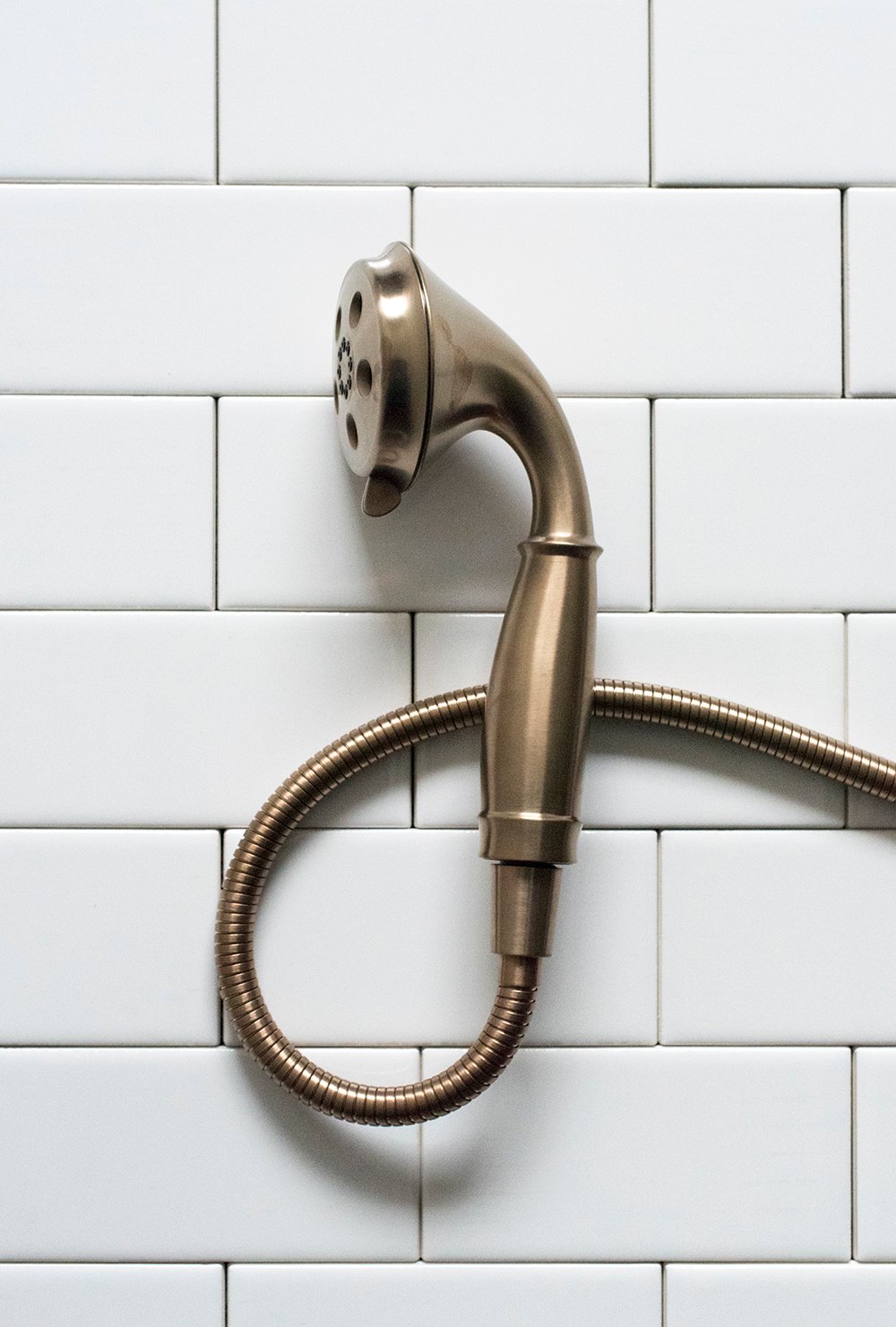
MY PROCESS
I’ve refined my process over the years and this is how I narrow down and choose plumbing fixtures for each bath renovation. Keep in mind, your process doesn’t have to look exactly like mine. This is just what works best for me when designing and renovating a space. It’s all about funneling your options into a more manageable selection…
- Create a budget (and stick to it!).
- Use the budget to narrow options by price point.
- Narrow the search by finish (brass, nickel, chrome, bronze, black, copper, polished, satin, antiqued, etc).
- Refine the search by style (your preferred aesthetic… modern, traditional, industrial, etc).
- Choose the top two options and look at them beside other products going into the space (I like ordering samples or making mood boards).
- Make the final selections and confirm everything will function as expected.
- Purchase additional valves or extra parts if needed, for functionality.
Easy enough, right? I think the Q&A section below might help with your style, finish, and scale dilemmas! Keep reading…
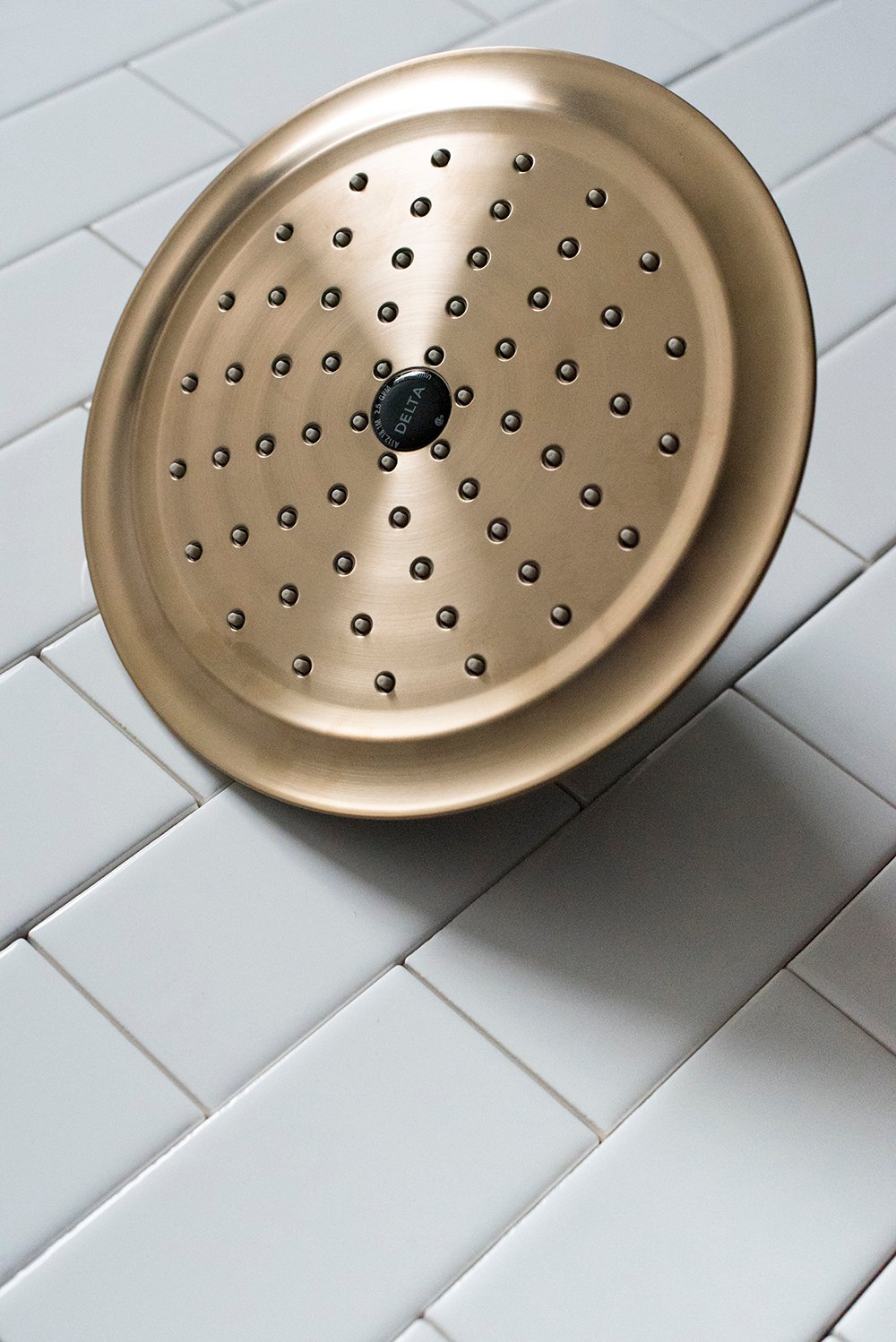
Q & A
I asked some friends & followers what they’d like to know about selecting plumbing fixtures…
In your opinion, what finishes are the most timeless? This is a controversial question, but I think nickel and brass are the most classic options that will withstand the test of time in a traditional setting. Now- finish has a LOT to do with that. The 80’s faux brass is not a good look and that’s not what I’m talking about… think antique or living brass that can be found throughout design history, or polished nickel. In a super modern home, I’d opt for stainless, chrome, or flat black. I’d also encourage you to examine the space as a whole… just because you have a timeless faucet in a classic finish does not mean the space won’t look dated in a few years if everything else is too “trendy”. The surroundings certainly come into play! If it were me- I’d stick to a good antique brass or polished nickel, to specifically answer that question.
Do you have to carry a finish throughout a room? Or the entire home? Absolutely not! I’m all about mixing metals for a curated look. For example, in our guest bath, we’ll be using antique brass faucets, towel hooks, and shower trim, but you’ll also see plenty of polished nickel paired alongside the brass. The wall mirrors have nickel frames, the vanity hardware is also polished nickel, as well as the light fixtures. I actually think a space gets boring if the same finish is repeated over and over again- it’s just too basic and easy. I’ll talk more about mixing metals in the question below…
Is it ok to mix metals and fixture styles? I have a couple rules preferences I try to stick to… I keep water related plumbing fixtures (faucets, shower head, tub down spout, levers, drains, overflows, etc.) the same finish AND style. I like to keep with a collection for consistency. For example, these fixtures for the guest bath are all apart of the Delta Cassidy Collection. Similarly, I also like to keep the bathtub, sink, and toilet consistent (the same white, etc). If you’d like to bring in some variety, I prefer to do that with hardware, mirrors, lighting, hooks, towel bars, etc. Those can certainly be a different finish- just make sure the style is complimentary or provide enough contrast to make it feel intentional. Does that make sense?
Does a higher price point mean better quality? Not necessarily. With the more expensive plumbing fixtures, you’ll typically get better or more finish options. Lots of plumbing fixture manufacturers have both high and low-end brands. I use my budget to narrow down my options because plumbing fixtures add up quickly and can get really expensive if you’re buying for an entire bathroom. More so than price, I always like to check the materials of which each product is constructed, as well as the efficiency. That’s how I determine quality when shopping… not the price point. I’m using Delta in the guest bathroom and I’ve been to their headquarters in my home state of Indiana, and have watched their rigorous product testing. I can vouch for the durability, which is important when it comes to a guest bath. I’ve had high and low end plumbing fixtures and as long as you do your research, you should be just fine!
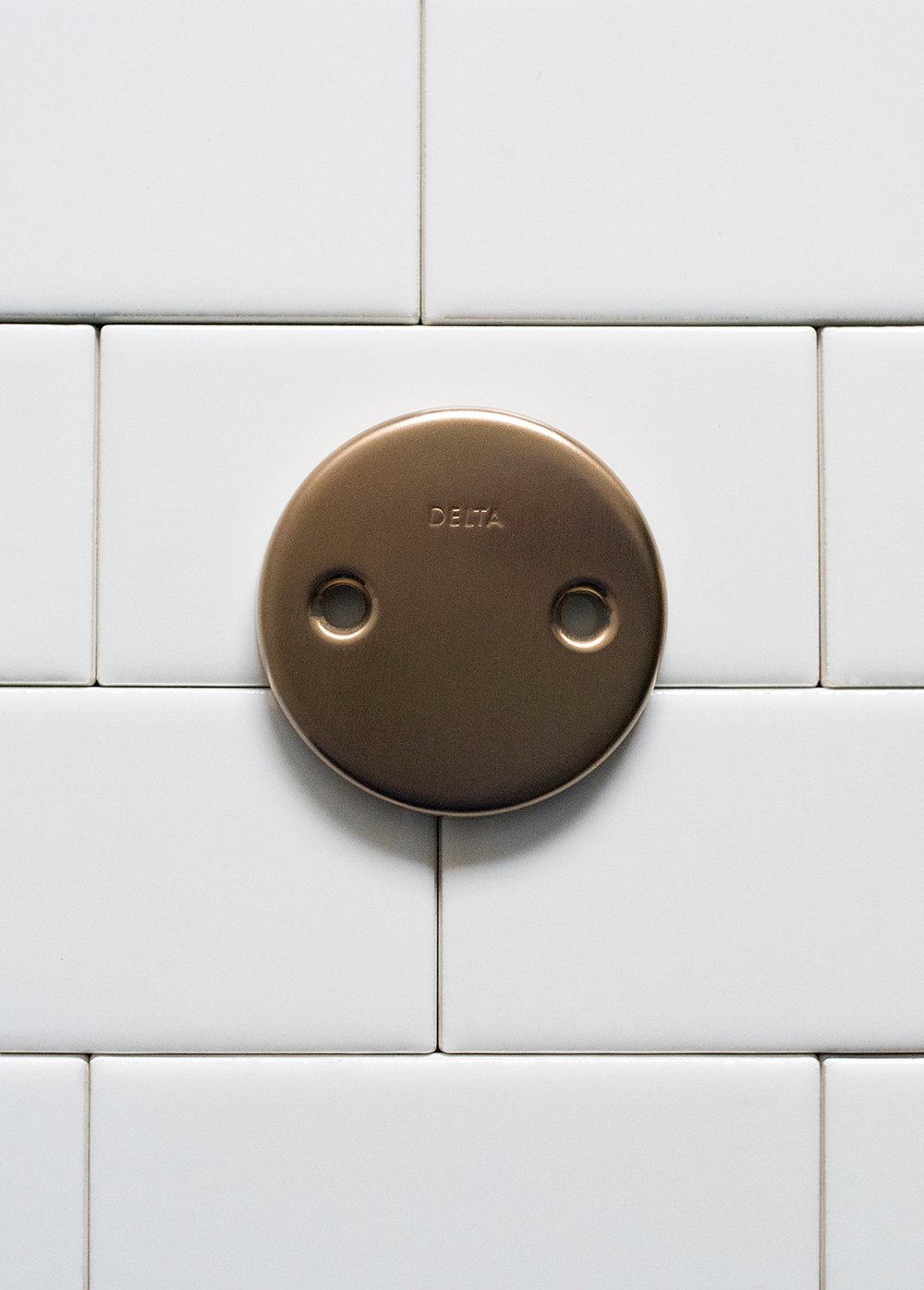
What plumbing fixtures am I forgetting to purchase? Most likely the drain, bathtub overflow (pictured above), plumbing valves, and the toilet lever. Those items are usually left behind by accident or are an afterthought once the budget has been depleted. If you’re using a bathtub or sink that comes with hardware, it’s most likely not going to match your other “water” plumbing fixtures (faucets, shower trim, etc). I prefer that all of this matches, so I always plan for those tiny items in the budget and order them right away. It’s not a great feeling to renovate an entire bathroom, only to see a newly installed tub with a polished chrome overflow plate and drain that doesn’t look very good with your new brass shower set. It’s all about those small details, don’t worry though- there is a printable checklist I made for you at the end of this post to ensure you’re not forgetting anything!
Widespread faucet or single hole faucet? This question refers to the two types of deck mount faucets (aka, countertop mounted). A widespread faucet has three holes- the faucet itself, and two levers. A single hole faucet is sometimes referred to as a joystick faucet. I prefer widespread, but it’s really just a personal preference! Consider how you like to control the water pressure and temperature- that’s my best advice for making a selection. To really throw a wrench into the equation, there are also wall mounted faucets. Again… it’s really just a personal or design preference. You can’t go wrong!
How do I pick a style? Look at the rest your home. What aesthetic do you gravitate toward… traditional lines, minimal or modern shapes, industrial edges? Use those answers to guide you! It’s ok to mix and match too- maybe an eclectic or curated aesthetic best fits your vibe? Go with what you like- that’s my biggest piece of advice.
What is one faucet style you never want to see ever again? Ha, EASY! The deck mount faucet with the giant joystick crystal ball on top. We have about 3 in our new house that were installed in the early 90’s. They still work great, but I can’t get over the weird shape and dated look. They’ll be ripped out and donated soon enough!
What plumbing fixture mistake do you see people make most often? My pet peeve is seeing a faucet that is disproportional to the bathroom sink. This not only looks weird, but it creates functional issues as well- like splashing or spilling. You want to make sure the water is being diverted into the sink in the correct place. Which brings me to another good point… scale! This probably goes without saying, but you also have to consider scale when choosing plumbing fixtures. A tiny faucet with a giant sink looks awkward. When in doubt, look at the product specifications and make a mock up. Sometimes I’ll cut the sink shape out of cardboard and users painters tape to get a sense for the faucet scale on the wall. Don’t forget to check the faucet reach too… that’s how far it projects outward!
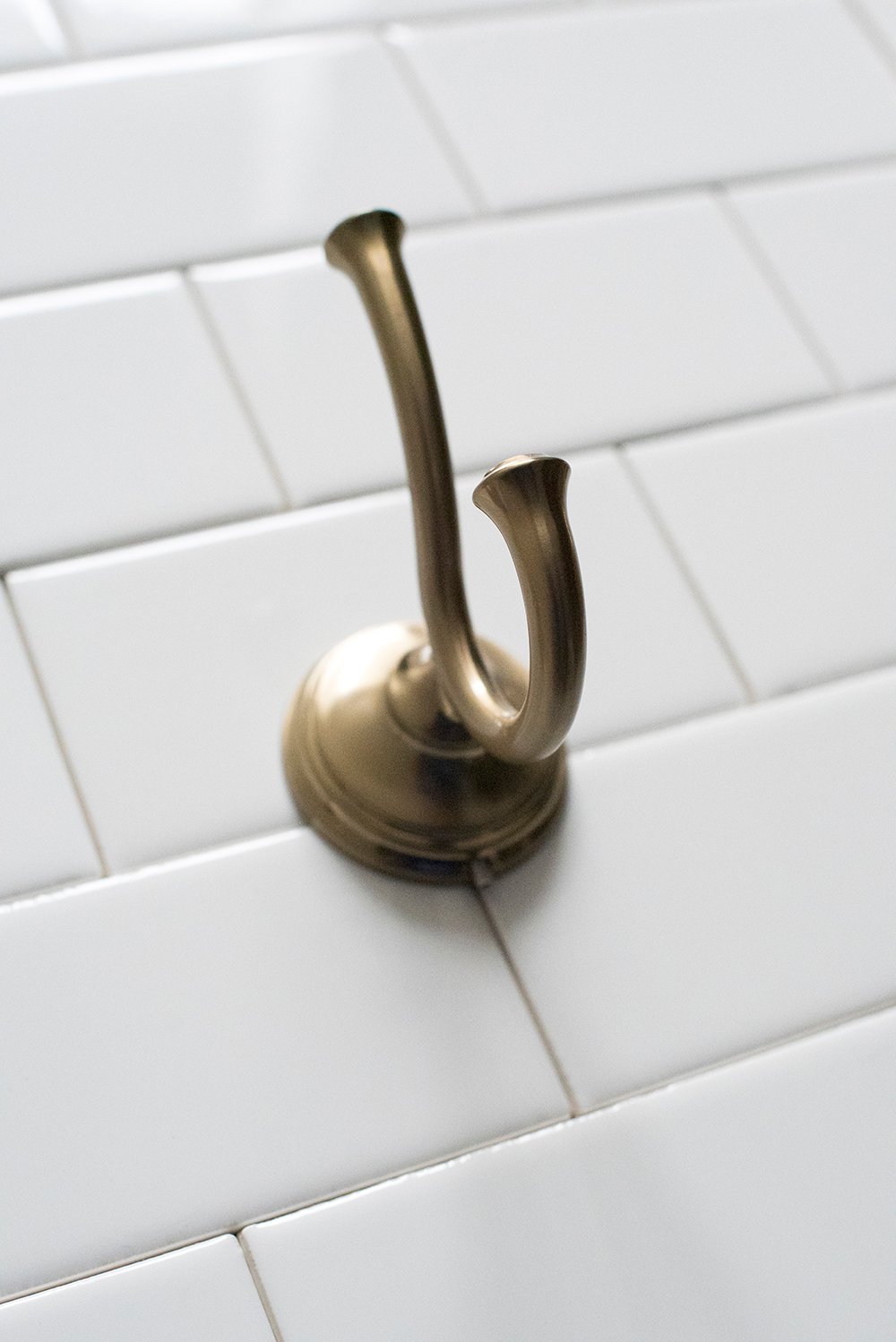
CHECKLIST
As promised, I compiled a big checklist for you that includes every plumbing fixture you might need for an upcoming bathroom project or renovation. Obviously not all of them are applicable or meant to be installed together, but it will give you a good idea of your options or things you might have forgotten…
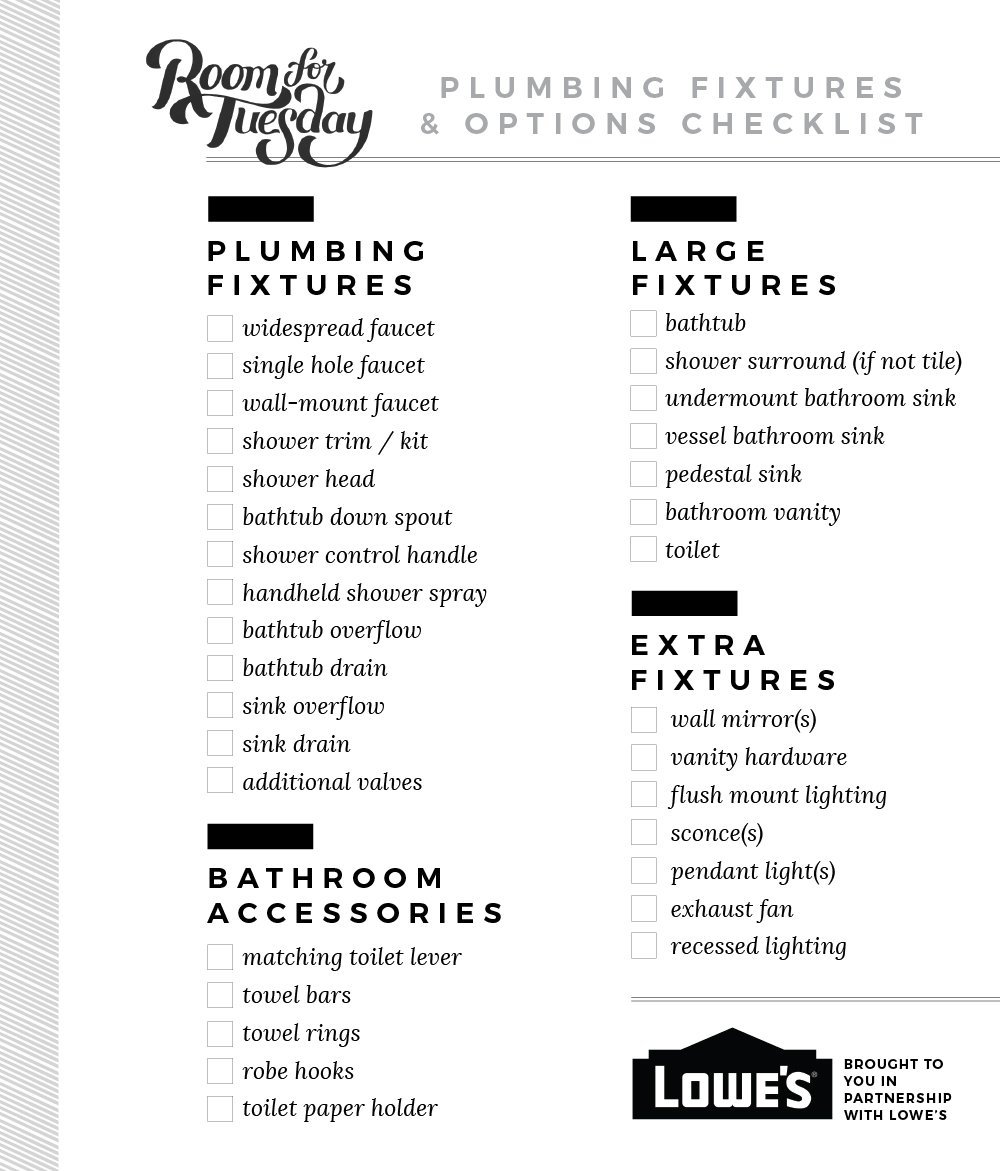
If you missed the full design plan for our guest bathroom we’re currently working on (and before images), click here! Otherwise, I’ll link the main plumbing fixtures we’re using below…
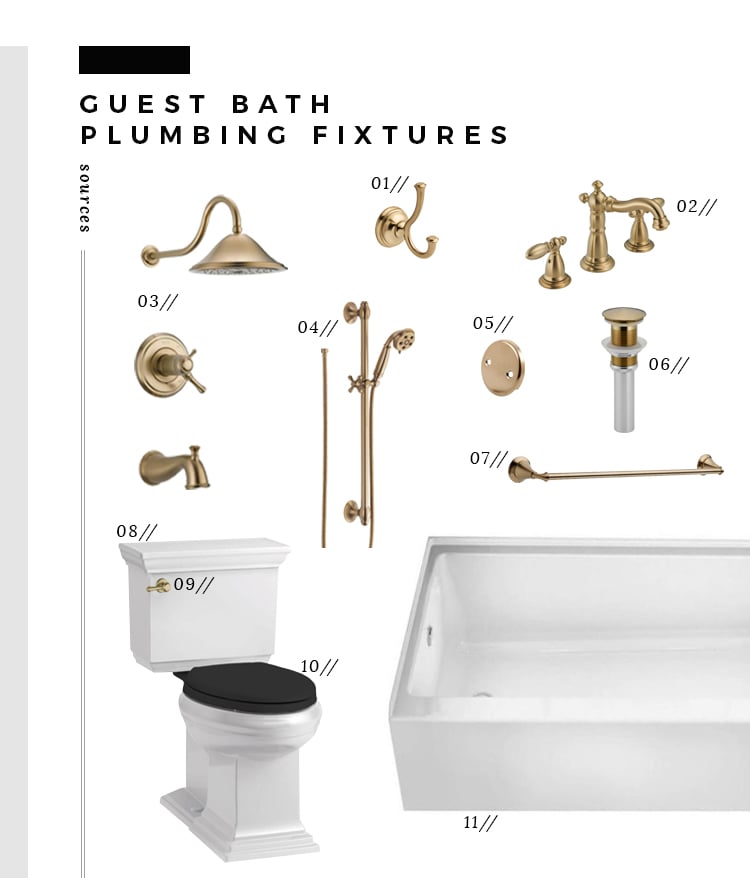
01: robe hook // 02: widespread faucet // 03: shower trim // 04: handheld shower spray // 05: overflow plate // 06: drain // 07: towel bar // 08: toilet // 09: toilet lever // 10: toilet seat // 11: bathtub
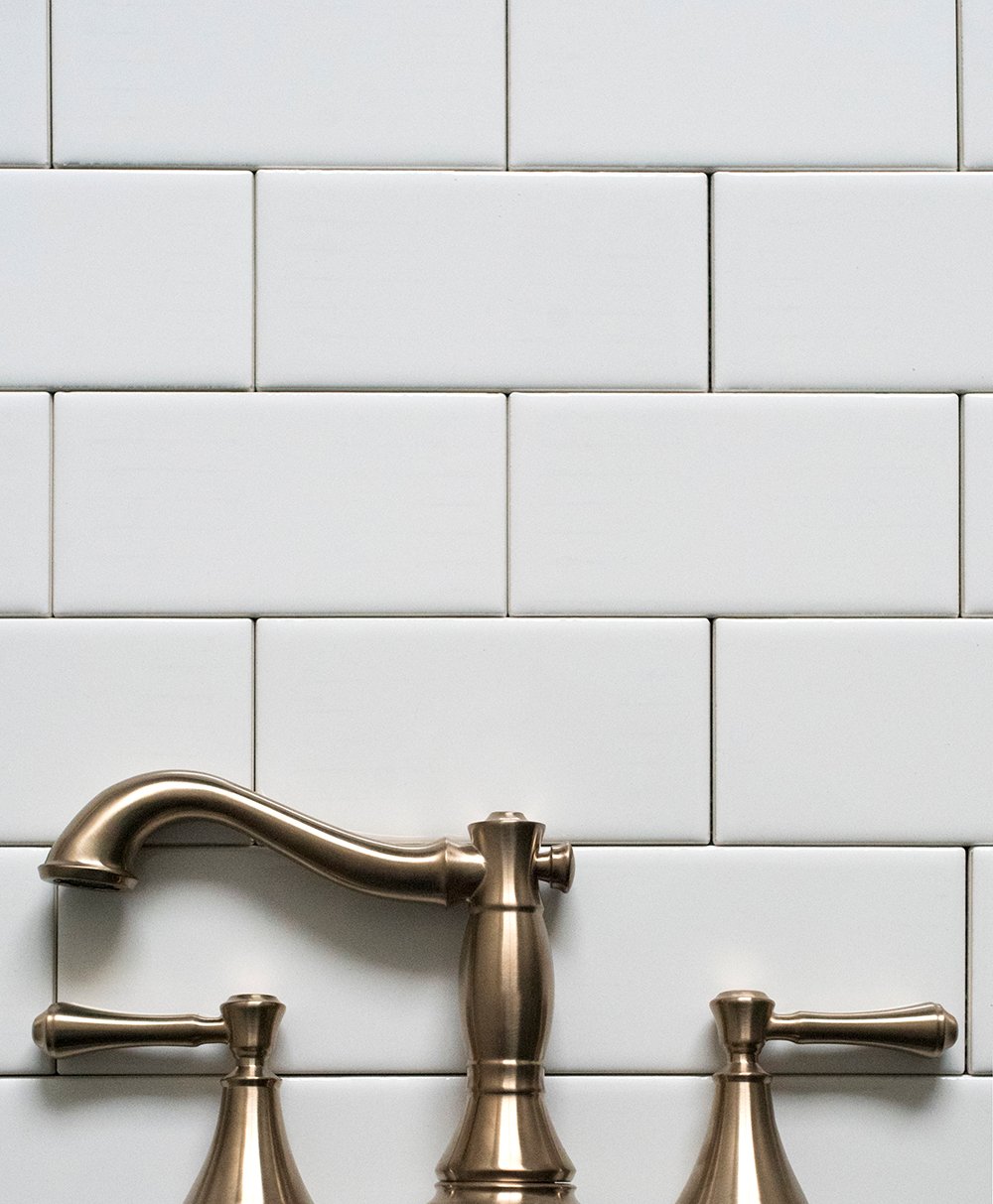 Questions? Give them to me in the comments below! I’m always happy to help, and I hope this post will be useful. Is anyone else working on a bathroom renovation or planning to tackle one later this year? I’m SO excited to see the progress in our guest bath. I’ll post an update soon once we start building it back up again! We ran into some leveling issues and decided to replace 90% of the drywall.
Questions? Give them to me in the comments below! I’m always happy to help, and I hope this post will be useful. Is anyone else working on a bathroom renovation or planning to tackle one later this year? I’m SO excited to see the progress in our guest bath. I’ll post an update soon once we start building it back up again! We ran into some leveling issues and decided to replace 90% of the drywall.
